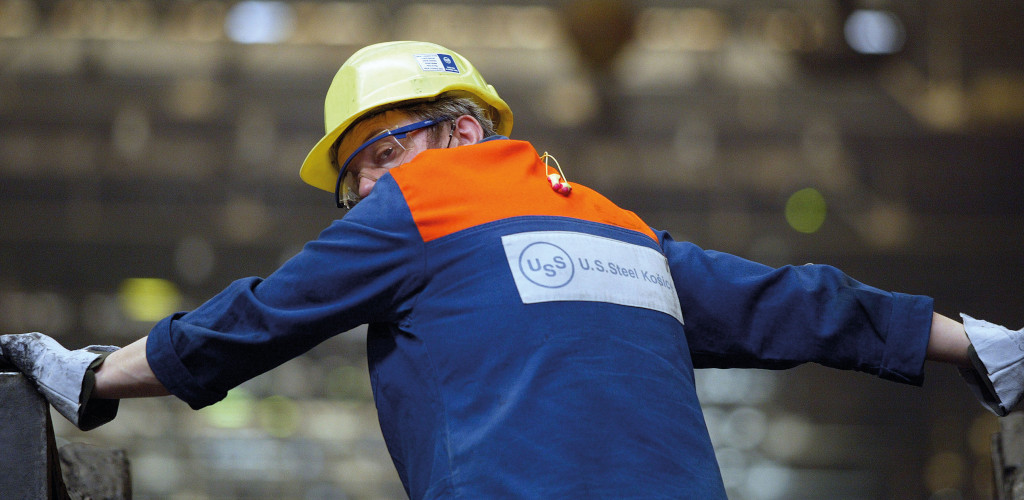Weighing the Outlook for an Essential Commodity

By John Vogt
Amid global surpluses and political tensions, the U.S. steel industry faces uncertainty. Former Halliburton executive John Vogt offers a sharp analysis of the shifting dynamics, highlighting the potential ripple effects on breakbulk opportunities and the broader logistics landscape.
From Issue 1, 2024 of Breakbulk Magazine.
(4-minute read)
The steel industry is the focus of upheaval and political maneuvering. From blocking Nippon Steel’s purchase of U.S. Steel, one of the country’s major steel manufacturers, to an onslaught of potential U.S.-imposed tariffs, the American steel industry faces an uncertain future. The question is whether this is the beginning of a new wave of domestic growth or a disruption that will adversely impact projects across multiple sectors.
Steel in its various forms is used extensively in new construction and results in significant breakbulk movements. While the project will determine the specific steel that is required, the capability to produce the steel domestically or within the United States-Mexico-Canada Agreement (USMCA) region can be beneficial for its reliability versus outside sources, but domestic production may also mean higher costs. Both the global supply of steel and possible tariffs will affect the price of most types of steel. But as we will see later in this article, tariffs may not have the impact on projects that many anticipate.
The Threat of a Global Steel Surplus
China is the largest global producer of steel (57%), with India (8%), Japan (4%), and the U.S. (4%) following in smaller quantities. There is a global steel surplus, so discounted steel is prevalent due to government subsidies.
The Canadian Steel Producers Association says: “Foreign government subsidies and other trade distortions have resulted in steel global overcapacity” and goes on to add “surplus steel that could be produced and shipped into the Canadian market has the potential to not only injure the domestic industry, but threatens to eliminate it from the market.” This is probably true for the U.S. and Mexico as well.
USMCA Steel
Each of the USMCA countries – Canada, Mexico, and the U.S. – lacks sufficient steel production to fully meet domestic demand, necessitating imports. According to the American Iron and Steel Institute, approximately 21% of steel used in the U.S. is imported, primarily from Canada, Brazil, Mexico, and South Korea. While the prospect of an additional 10% tariff on steel from China might seem significant, Chinese steel represents only 2% of U.S. imports, and imports from China have decreased by approximately fivefold over the past decade.
The majority of fabricated steel shipments consist of pipes and reactor vessels, both of which are vital components in large-scale industrial projects. Pipes are typically made from high-carbon steel, fabricated in rolling mills into precise lengths, and often lined or coated to prevent both external corrosion and internal degradation from the materials they transport.
Reactor vessels, on the other hand, are made from low-alloy steel — commonly manganese-molybdenum steel —to ensure strength and impermeability under high pressure. These vessels may also be clad internally with stainless steel, which incorporates chromium, nickel, and molybdenum to resist corrosive substances.
These products represent a significant volume in breakbulk cargo shipments. While current U.S. tariff law does not currently cover fabricated structural steel, such as pipes and reactor vessels, this exclusion has been criticized as a “loophole” by the domestic steel industry. However, fabricated steel products manufactured in China are subject to separate tariffs, further complicating the landscape for international shipments.
New Directions
If the U.S. is to decrease its reliance on foreign steel outside the USMCA, that can only mean an increase in production within the trade alliance. That’s good news for project cargo service providers throughout the region, from EPCs to last-mile transporters.
In addition, supplying the elements needed to make specialized grades of steel point to a resurgence of mining in the U.S. This would give a further boost to breakbulk movements and large-scale project investment in the region. In December, Trump advisers urged the incoming president to expedite permitting and construction reviews for production of critical minerals, i.e., mining projects on federal lands.
The potential to make the region energy self-sufficient is an added advantage vis à vis the trade deficits and security of the countries. The U.S., via its gas production, has an advantage with low-cost gas, a major cost advantage for steel smelting as well. Pipelines could be added, extended and improved to provide low-cost energy where it is needed – such as for new steel plants and manufacturing facilities.
Whether fabricated products will become part of the tariff structure is unclear, but if they do, domestic fabrication will grow in an effort to reduce materials cost.
As for trading partner tariffs, they many never come to pass. In Trump’s first term, tariffs on Canada and Mexico were discussed during USMCA negotiations to pressure these trading partners to limit the flow of fentanyl and illegal immigrants into the U.S., but these tariffs were ultimately dropped as part of the agreement.
And, here’s something all three countries can agree on: reducing their trade deficits. The growth of the steel industry – whether that’s in the U.S. or across the three trading partners – to close the gap in supply would help.
Breakbulk Americas 2025 is happening on Sept. 30 - Oct. 02 in Houston.
John Vogt, former Halliburton vice president of global logistics and visiting professor at the University of Houston-Downtown, is a regular contributor to Breakbulk, specializing in trade and Incoterms.
